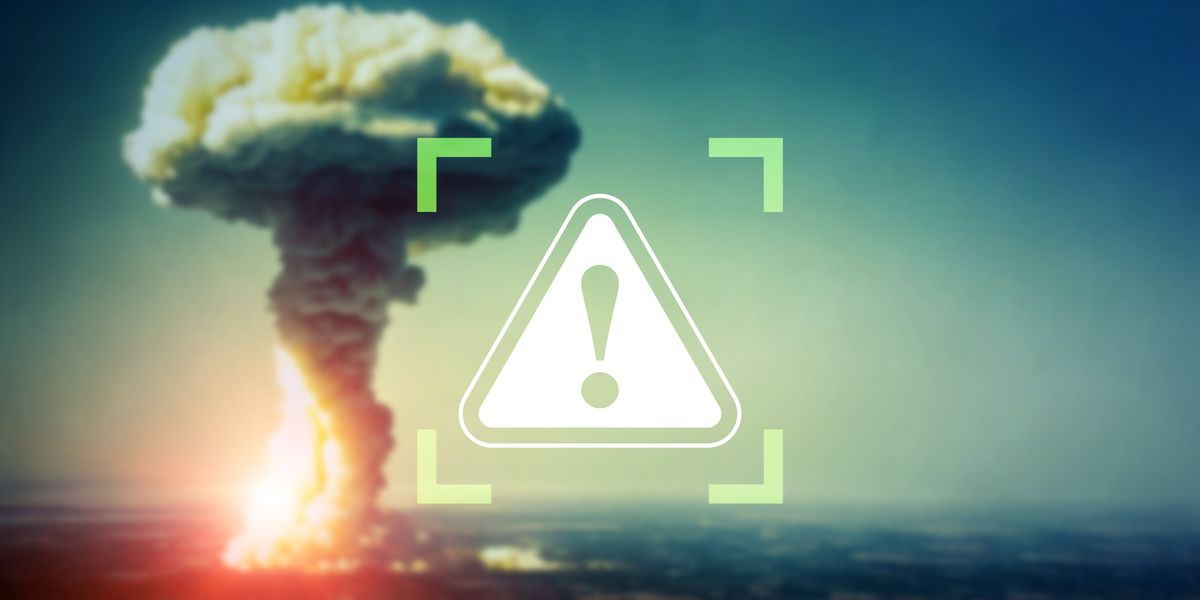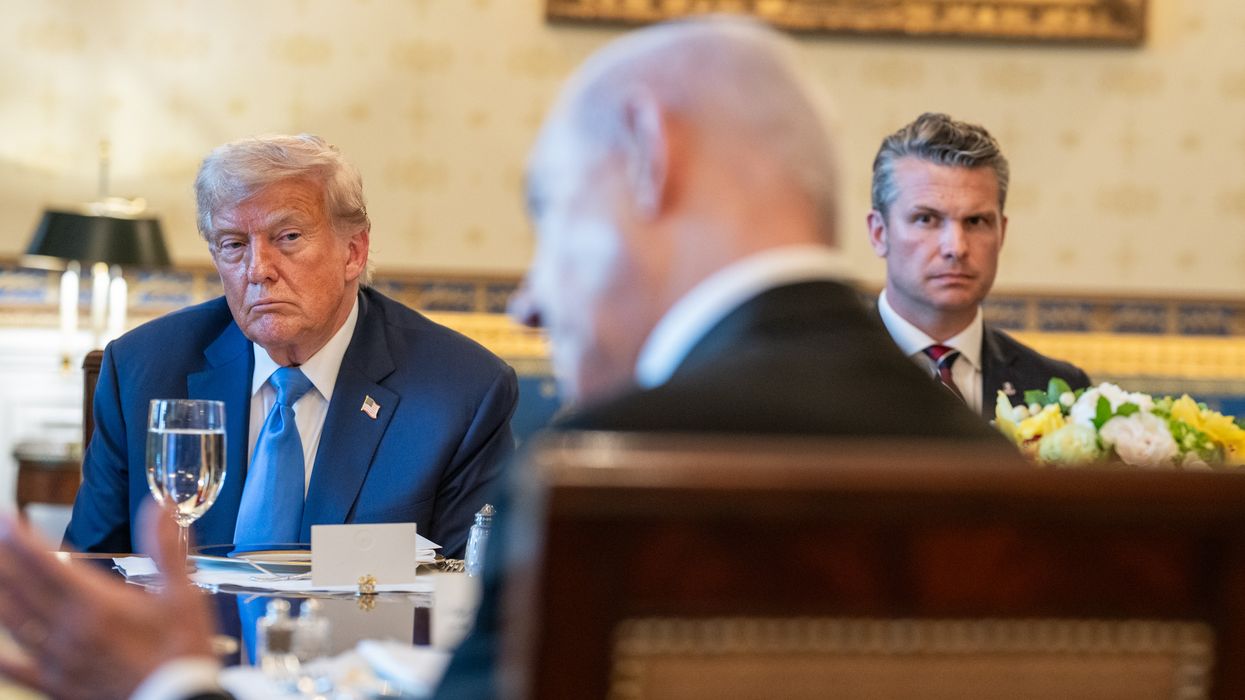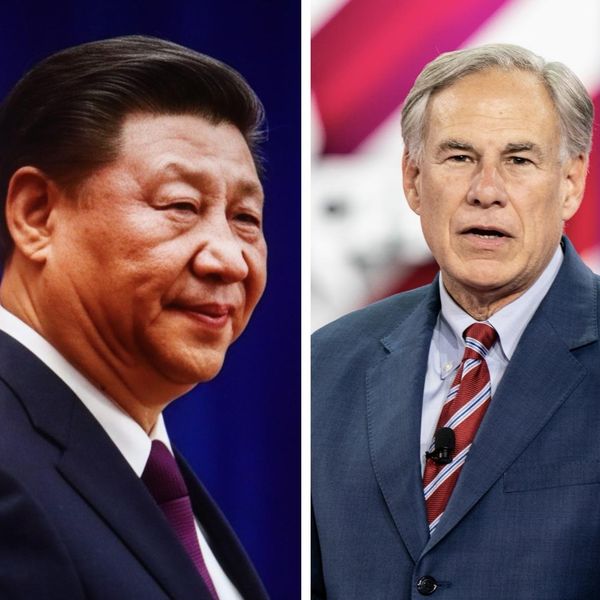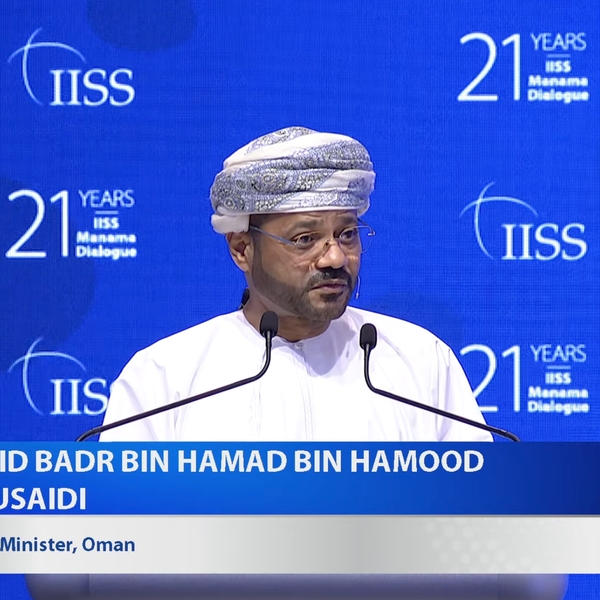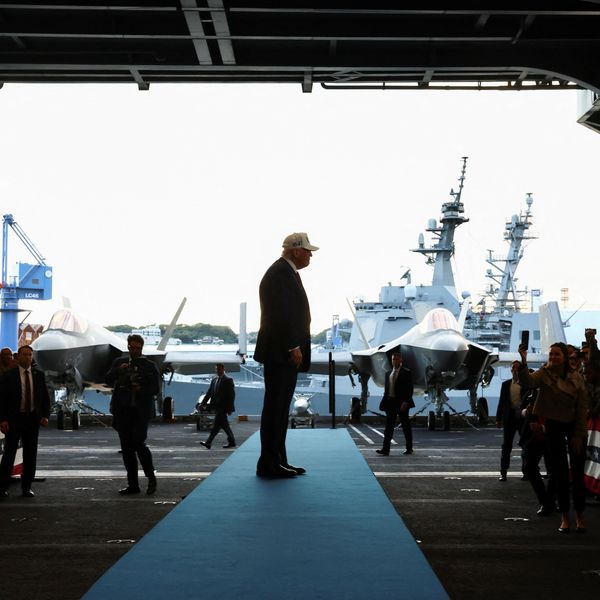For a fleeting moment on May 22 the world may have come closer to a catastrophic nuclear accident due to a reckless Ukrainian drone attack on two Russian strategic nuclear early warning radars at Armavir.
Fortunately, a subsequent Ukranian drone attack on a third radar station at Orsk in Russia on May 26 failed.
The incidents underscore a few important things. First, the Ukrainians could have needlessly sparked a crisis in which the Russians, feeling like one of their defenses against a U.S. nuclear attack, were down, struck back hard in retaliation. And second, it highlights the need for Russians to acquire comprehensive space-based nuclear radar of their own.
What happened and what it means
The Ukrainian attack at Armavir was a big deal. It shut down both Russian radars immediately. And it’s likely that within minutes of the attack, an emergency meeting took place with the commander of the Russian strategic rocket forces along with his highest-level officers.
The attacks should not be taken lightly, and President Biden and Secretary of State Antony Blinken should be giving this special attention.
Even after decades of expensive Russian attempts to build a space-based early warning system that could provide global surveillance of U.S. submarine missile launches, Russia has been unable to marshal the extremely specialized high-technologies needed to build such a system.
To in part deal with this serious shortfall in Russia’s nuclear early warning capabilities, Vladimir Putin himself initiated and publicly supported a highly visible national effort to build a dense and capable nuclear strategic early warning radar system that utilizes numerous giant radars (typically about 30 to 35 meters high).
Since these radars basically form the singular foundation of Russia’s strategic nuclear early warning capabilities, any tampering with their functions in any unpredictable global situation is accompanied by very grave risks of misinterpretations of intentions that could lead to a massive launch of Russian nuclear forces.
Figure 1 below shows a satellite photograph of the two radars at Armavir. The radar beam from what is labeled “Radar Fan 1” is pointing in a counterclockwise direction from North of roughly 125°. Radar Fan 2 is pointing in a clockwise direction from North of roughly 125°.
Figure 2 shows the coverage of the two radar fans at Armavir, and the radar at Orsk drawn on a spherical earth. A side view of a radar fan is shown in the upper right corner. The side-on view shows an extremely important consequence of the fact that Earth is curved and the radar beam propagates basically in a straight line. Because of that, the radar cannot actually see objects near the surface.
For example, it is not possible for the radar to observe aircraft flying over Ukraine. Even ATACM missiles launched from the Ukrainian Black Sea coasts, which rise to altitudes of no more than 40km before they start gliding to their targets, cannot be reliably detected by these radars.
Thus, the radars at Armavir pose no surveillance threat to Ukrainian aircraft, cruise missiles, drones or ATACM missiles. The real threat to Ukrainian aircraft and missiles is from Russian airborne radar systems that are tightly queued into Russian ground-based surface-to-air missile systems.
Why these radars are so important
The importance of having a space-based satellite early warning system can be readily understood by re-examining figure 2.
For purposes of illustration, imagine that a Trident ballistic missile is launched at Moscow from the Indian Ocean at about the same latitude as Bombay on the West Coast of India (20° North latitude). The range to Moscow would be roughly 4,500 to 4,600 km.
If the ballistic missile were launched on a “minimum energy trajectory” (at a loft angle of roughly 34°) it would require the smallest missile burnout speed needed to reach Moscow. In this case the time between “breakwater” missile ignition and impact would be roughly 21 to 22 minutes.
However, the Trident missile is designed to launch its warheads to much higher burnout speeds. For example, it could launch its nuclear payload toward Moscow at a slightly higher speed and lower loft angle of 25° (this is often called a slightly “depressed” trajectory) and still easily reach Moscow in 18 to 19 minutes.
If a launch towards Moscow is on a slightly depressed trajectory, the Russians would not know they were under attack for at least six minutes, until the warheads and the rocket upper stages passed into the Armavir radar search fan. If the Armavir radar was not operating it would take eight to nine minutes from breakwater before the Russian radars in Moscow would indicate they were under attack.
The radar in Moscow would have to observe the incoming missile payloads for one or two minutes before it would have enough data to issue an alert — which means maximum decision-making time that might be available to Russian leaders would be about six or seven minutes!
So you can see why the Russians would be incensed over the Ukraine attacks, which would literally cut their already limited time in which to respond to a nuclear attack.
If the Russians had an early warning space-based system, they would know that they were under attack roughly 19 minutes before the attacking warheads would arrive and destroyMoscow. They would also immediately know whether or not ballistic missiles were being launched from other parts of the world.
Although all of these warning times are shockingly short, it is clear that a warning time of 19 minutes versus one of eight to nine minutes could make the difference between forcing Russia to rely on an automated decision that could lead to the accidental destruction of the United States and Western Europe, or instead on a more reasoned assessment by political leaders and highly professional military commanders.
Any appropriately knowledgeable expert who has listened carefully to Putin’s numerous statements about nuclear weapons would know that he has a detailed knowledge of this warning system and its limitations. He has regularly shown up at the inaugurations of early warning radar sites, overtly indicating his concerns about the need for adequate and reliable early warning systems.
The Russians do currently have an extremely limited space-based early warning system. The system only observes the U.S. ICBM fields near its northern borders and cannot be proliferated to provide global coverage against U.S. submarine missiles. It does not even have 24-hour coverage of the U.S. ICBM fields, since nine satellites are needed to provide that coverage and only four are active at this time.
I have sought to warn the U.S. government leadership of this serious problem, which could have been solved 30 years ago by the U.S. “lending” certain technologies to the Russians. My proposals involved providing the Russians with specialized space-qualified infrared arrays and electronics that would allow them to build their own systems.
This technology would not give the Russians any sensitive military secrets. There would be no way for the Russians to “reverse engineer” these implementing components. Just like the most advanced computer chips, only a vast technical enterprise could achieve such an end.
Instead of recognizing that it is in the interest of the entire world for both Russia and the United States to have reliable and capable early warning systems, at that time, the Clinton administration largely ignored this serious problem, which I believe threatens the survival of civilization even today. Other administrations that followed did no better.
The bottom line is that this grave danger to human civilization, and possibly human survival, could have been solved by competent political leadership almost 30 years ago, to the benefit of the entire world. But it wasn’t, which makes the attack on the radars now a potential crisis.
- Russia's upper hand puts US-Ukraine at a crossroads ›
- Putin may be at the door. Why is Biden ignoring the bell? ›
- Cartoonish claims about nuclear war scenario are unhelpful | Responsible Statecraft ›
- Congress: Let Ukraine hit more targets inside Russia with US weapons | Responsible Statecraft ›
- Prolonging the Ukraine war is flirting with nuclear disaster | Responsible Statecraft ›

